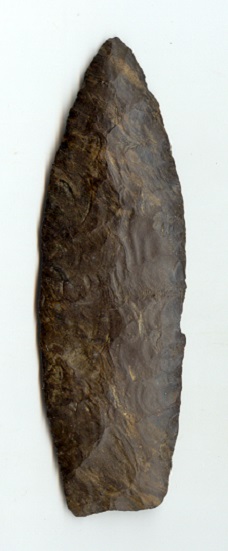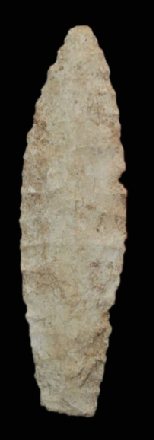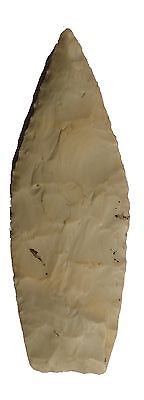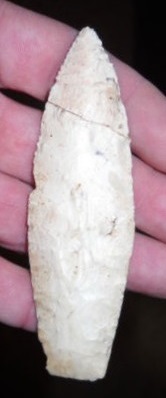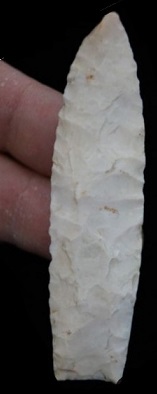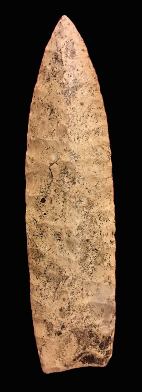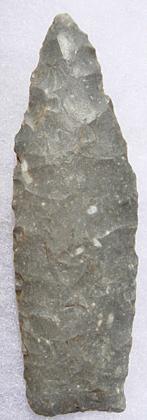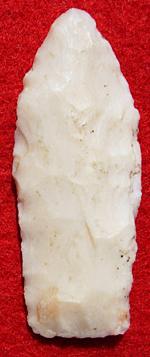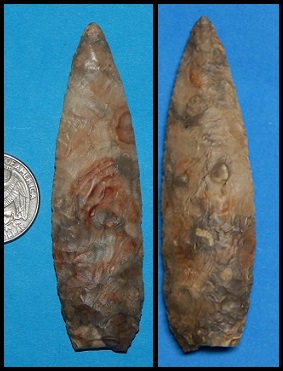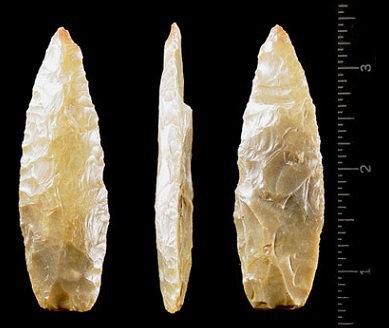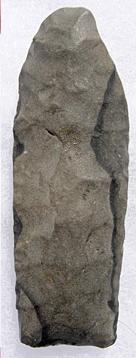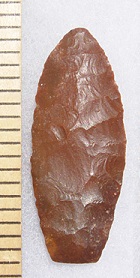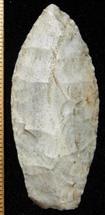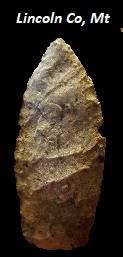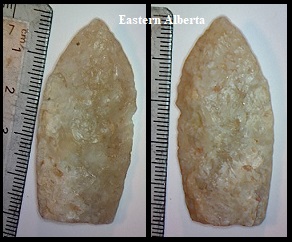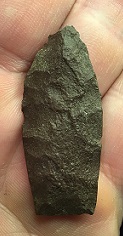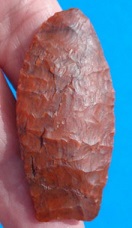Outline is Representative of Size and Shape:
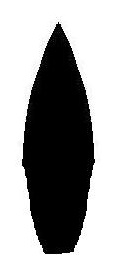
Name Details:
Identified By: Frank H. H. Roberts Jr. (named) / Maria Wormington (first published)
Named For: Type Site
Date Identified: 1943 / 1957
Type Site: Agate Basin Site, eastern Wyoming
Identified By: Frank H. H. Roberts Jr. (named) / Maria Wormington (first published)
Named For: Type Site
Date Identified: 1943 / 1957
Type Site: Agate Basin Site, eastern Wyoming
Point Validity:
Valid type
Roberts was a distinguished anthropologist which held many prestigious positions including the Director of American Ethnology. Wormington was a renowned Anthropologist and was known as the foremost expert on Paleo Archeology. This point was published in a professional publication and is considered a valid type
Roberts was a distinguished anthropologist which held many prestigious positions including the Director of American Ethnology. Wormington was a renowned Anthropologist and was known as the foremost expert on Paleo Archeology. This point was published in a professional publication and is considered a valid type
Agate Basin Lanceolate
Cluster: Plano Lanceolate Cluster Description of Physical Characteristics and Flaking Pattern:
This is a long narrow medium to large (2.5 to 5.25 inches) long slender lanceolate point with an elliptical cross section. The blade is generally has a thickness ratio of 2:1 to 3:1 width thickness ratio. The blade is excurvate and symmetrical, with the blade usually parallel at the midpoint and curving in towards the base. The middle to the bottom one third of the blade is usually the widest point of the blade. The base is primarily straight, but may range to slightly convex, and never concave (see below). Heavy basal grinding is present on the hafting regions, but this point lacks any basal thinning. Lateral edge grinding is always present, but some examples lack basal grinding. Lateral edge grinding is generally present to the widest part of the blade. These points commonly have a high quality of workmanship with a flaking pattern that is primarily random and rarely collateral or horizontal transverse.
Size Measurements:
Length - 33 to 147 mm (average 55 to 70 mm), Width -18 to 39 mm (average 24 mm), Basal Width - 10 to 23 mm (average 17 mm), Thickness - 6 to 10 mm (average 8mm)
Length - 33 to 147 mm (average 55 to 70 mm), Width -18 to 39 mm (average 24 mm), Basal Width - 10 to 23 mm (average 17 mm), Thickness - 6 to 10 mm (average 8mm)
Commonly Utilized Material:
High quality and often exotic materials
High quality and often exotic materials
Additional Comments:
This type is often the most overused and abused type. Many lanceolate points get lumped into this type. True Agate Basin points are high quality points with a high degree of workmanship. Even examples that have been made from substandard material, still have an even and symmetrical blade. True Agate Basin points have a straight to slightly convex base. Points with a concave base would not be considered true Agate Basin points (Morrow, 2016).
Frison (1991) indicates that in many excavated sites Agate Basin always occurs stratigraphical above Folsom, radiocarbon dates suggest there may be some overlap between the two types.
This type is often the most overused and abused type. Many lanceolate points get lumped into this type. True Agate Basin points are high quality points with a high degree of workmanship. Even examples that have been made from substandard material, still have an even and symmetrical blade. True Agate Basin points have a straight to slightly convex base. Points with a concave base would not be considered true Agate Basin points (Morrow, 2016).
Frison (1991) indicates that in many excavated sites Agate Basin always occurs stratigraphical above Folsom, radiocarbon dates suggest there may be some overlap between the two types.
Distribution: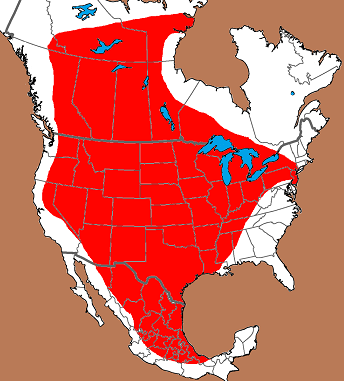

Distribution Comments:
This point is primarily associated with the Plains region (Great Plains and High Plains) of North America. It is found through out the Midwest and into the North Plains. May be found into Texas and western Ohio. This point has been reported at Grants Lake Nunavit Canada and the Northwest Territories. This point is rarely reported into The eastern United States, but has been reported at Plenge, Pennsylvania. This point rarely extends west pass the Continental Divide, but has been found into Oregon. This type has been found into the Tehuacan Valley in Mexico and the Valley of Mexico.
This point is primarily associated with the Plains region (Great Plains and High Plains) of North America. It is found through out the Midwest and into the North Plains. May be found into Texas and western Ohio. This point has been reported at Grants Lake Nunavit Canada and the Northwest Territories. This point is rarely reported into The eastern United States, but has been reported at Plenge, Pennsylvania. This point rarely extends west pass the Continental Divide, but has been found into Oregon. This type has been found into the Tehuacan Valley in Mexico and the Valley of Mexico.
Age / Periods:
Date: 1B,550 - 9,350 .P.
Cultural Period: Transitional Paleo
Glacial Period: Late Pleistocene to
Early Holocene
Culture:
Date: 1B,550 - 9,350 .P.
Cultural Period: Transitional Paleo
Glacial Period: Late Pleistocene to
Early Holocene
Culture:
Age Details:
Similar Points:
Guilford Straight Base, Lerma, Nebo Hill, Ohio Lanceolate, Sedalia, Ste Anne / Varney, Park Hill, Tamaulipas Triangular
Guilford Straight Base, Lerma, Nebo Hill, Ohio Lanceolate, Sedalia, Ste Anne / Varney, Park Hill, Tamaulipas Triangular
Other points in this cluster / Related / Associated Points:
Angostura, Browns Valley, Golondrina, Hell Gap, Midland, Milnesand, Plainview, Ruby Valley
Angostura, Browns Valley, Golondrina, Hell Gap, Midland, Milnesand, Plainview, Ruby Valley



